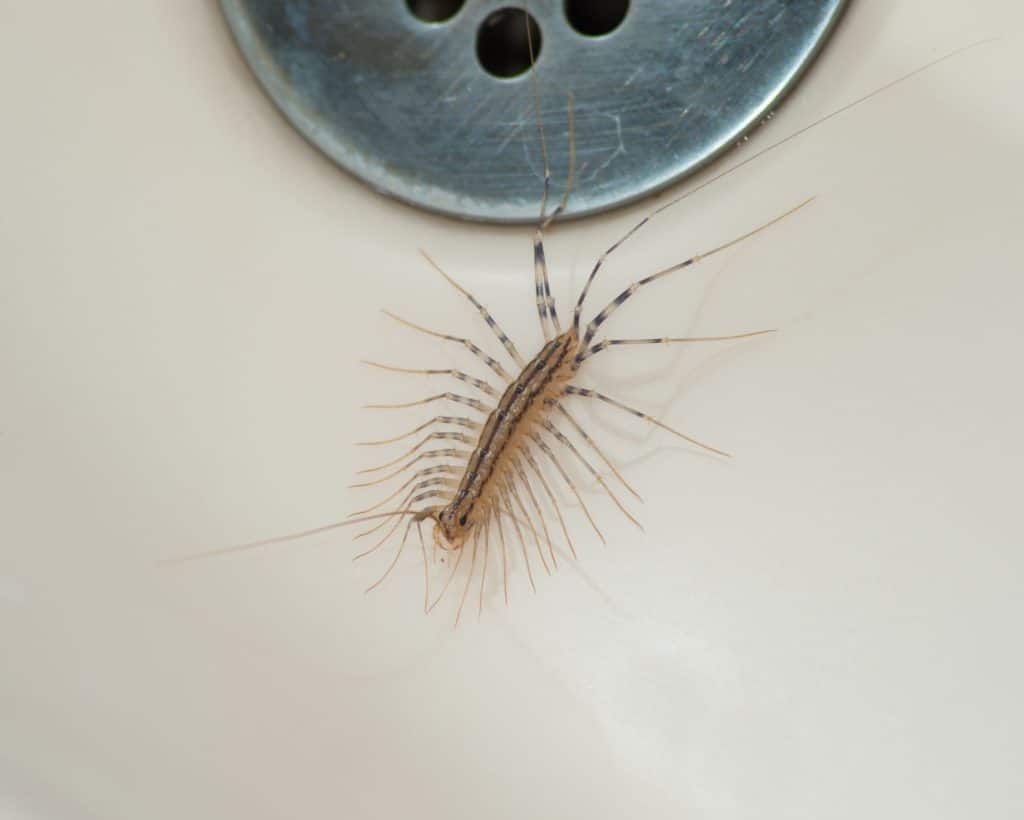
HOUSE CENTIPEDES
It creeps. It crawls. It might be in your halls…
Living in Arizona has its own unique charm and challenges: desert creatures and critters. Some of them fly. Some of them crawl. Some slither. And others simply walk. But one of the most unnerving sights you may ever encounter is the worm-like insect thousand-legger otherwise known as the House Centipede.
With more than 8,000 varieties of centipedes, no one would blame you for reacting to a centipede sighting with the classic “see, scream, smash” approach. Bug is gone, problem solved. But before you start smashing, let’s take a minute to understand this particular type of creepy crawler and what it’s doing on our property. In other words, Why are centipedes in my house?
What is a House Centipede?
The House Centipede is one of the smaller varieties of centipedes, with a size similar to the Silverfish Centipede and the Desert Centipede. Technically known as Scutigera coleoptrata, it has 15 pairs of fast-moving legs that enable it to scurry across the floor at more than one foot per second. Its speed, appearance, and hypnotic style of movement are more than enough to startle any homeowner.
The House Centipede is yellowish-brown in color with dark stripes, resembling a tiny lobster or langostino. A pair of extra-long, hair-covered antennae help it navigate and locate food and water, compensating for the insect’s poor eyesight with a heightened sense of touch and smell. The antennae are actually longer than its entire body, giving the creature an elegant and feathery appearance as it moves around.
A pair of claw-like structures on its head contain venom to complete the nightmare.
Life of a House Centipede
The preferred habitat of this long legged centipede is anywhere it finds coolness and moisture. Common outdoor hangouts include piles of leaves or yard trimmings, under rocks, or in trash. This might be all the motivation you need to keep your yard trim and tidy! Inside your home, House Centipedes seek out cool, damp places such as potted plants, bathrooms, or basements. You would be wise not to leave that wet towel on the bathroom floor. Some refer to the household centipede as a basement centipede, for obvious reasons. Either way, it’s a bug with a lot of legs, and like most homeowners, you simply want them gone.
The common House Centipede is mostly nocturnal, adding to the fear factor of things that go bump in the night. It’s not an insect that normally attacks humans, but curiosity or carelessness could lead to a “bite.” Its venom is non-lethal for humans but can nonetheless be painful. Certain individuals with allergies and sensitivities may experience serious reactions (much like people who are allergic to bee stings). As a general rule, young children and pets may have more severe reactions than adults due to their smaller body sizes. It’s best to keep curious hands and paws away from House Centipedes.
The upside to having a home centipede is that it hunts other pests including spiders, cockroaches, and termites. The downside is that the presence of a household centipede may signal the existence of a larger food source like an ant colony. Centipede sightings might also mean there’s a water leak on the property, as the centipede constantly seeks sources of moisture in the Arizona heat. Remember, centipedes won’t stay where there’s no food and water. Which leads to the next issue: How to get rid of them and prevent them from coming back.
Getting Rid of Centipedes in Your Home
The first step in preventing an infestation of House Centipedes is to make your property less appealing to these critters. Start by eliminating sources of moisture in your yard, such as a leaky hose bib or piles of leaves, stacked firewood, or lawn clippings. If you give them water they will come. Replace garden mulch with gravel to further eliminate moisture sources. Inside your home, look for leaks underneath your sink and refrigerator, and washing machine. Avoid the urge to kick ice cubes under the fridge or leave wet swimsuits on the floor.
Cracks and holes in the structure of your home make excellent hiding spots for a centipede. Patch up those cracks, crevices, and holes before a female centipede moves in. Once a female House Centipede finds a suitably moist and secluded area, she can lay around 35 eggs and will guard them until they hatch. With such a high reproductive rate, it doesn’t take long for a few helpful centipedes to become a full-fledged infestation.
If you don’t have centipedes, don’t know if you have centipedes, or want to ensure you don’t get centipedes, your next step is to level-up your defenses with professional pest control from Bug Guardian. A thorough home inspection and regular treatment plan will make you property inhospitable for pests, critters, and creatures, but user-friendly for you and your family.
